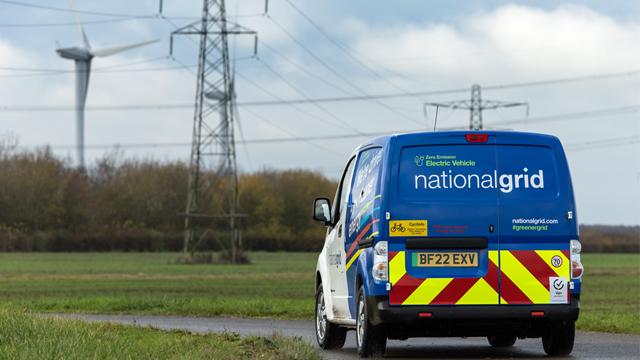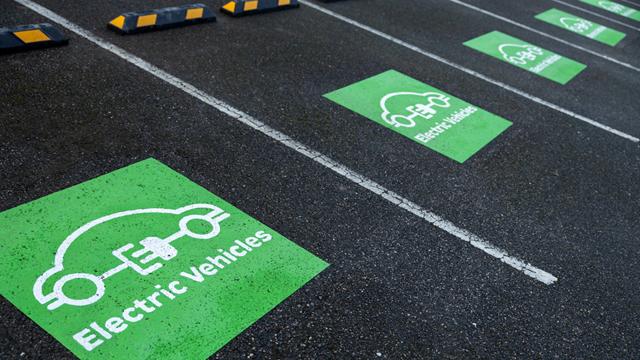
Busting the myths and misconceptions about electric vehicles
New petrol and diesel only cars will no longer be sold in the UK from 2035, and the US is aiming for half of all new vehicle sales to be electric by 2030. So, before long, it’s likely that far more of us will be behind the wheel of an electric vehicle (EV).
There are a number of questions and concerns people have about EVs, and just as many misconceptions that are making motorists think twice. Here we address some of the most common EV myths.

Myth 1: The electricity grid won’t be able to handle the increase in EVs
There are two aspects to whether the electricity grid can manage lots of EVs being plugged in at once:
Will there be enough electricity be available to charge EVs?
Do the electricity grid's wires have enough capacity for charging EVs?
It’s important to remember that this is a managed transition; the shift to EVs is happening gradually – not overnight. In England and Wales we’re connecting more and more renewable energy sources to the grid to supply us with clean electricity; for example, the growth in offshore wind farms means that wind power will adequately meet the future demand for electrifying transport, and we’re constantly upgrading our electricity networks to be better equipped to carry this cleaner power.
Find out more about the UK’s Great Grid Upgrade
1. Will enough electricity be available to charge EVs?
There may be future scenarios where millions of EV owners plug in their EVs at the same time. So is it possible to spread out the demand, while still making sure we all get our EVs charged when we need to?
A big part of managing demand for electricity, including through increased EV uptake, is making sure power is there when we need it – a job Britain’s electricity system operator (ESO) manages second-by-second.
Through smart charging EVs can in fact help to balance the system, helping consumers use green power when it’s plentiful (and often cheaper) and avoid times when there’s more load on the network. Vehicle-to-grid technology could even send that power back to the grid when needed.
With this in mind, the UK Government has introduced Electric Vehicle Smart Charge Points Regulations, which ensure that EV charge points will have this smart functionality.
Similarly in the US, Smart Chargers and Time of Use Rate programmes will support balancing the load throughout the day.
It’s also important to bear in mind that a significant amount of electricity is used to refine oil for petrol and diesel. Fully Charged’s video Volts for Oil estimates that refining 1 gallon of petrol would use around 4.5kWh of electricity – so, as we start to use less petrol or diesel cars, some of that electricity capacity could become available.
2. Do the electricity grid's wires have enough capacity for charging EVs?
The simple answer is yes. The highest peak electricity demand in the UK in recent years was 62GW in 2002. Since then, the nation’s peak demand has fallen by roughly 16% due to improvements in energy efficiency.
Even if we all switched to EVs overnight, we estimate demand would only increase by around 10%. So we’d still be using less power as a nation than we did in 2002, and this is well within the range the grid can capably handle.
Nevertheless, at National Grid we’re working with the distribution networks, government, the regulator and industry to provide the green energy infrastructure around Britain – the wires, the connections to charge points – to support the needs of a decarbonised transport network into the future.
In the US, the grid is equally capable of handling more EVs on the roads – by the time 80% of the US owns an EV, this will only translate into a 10-15% increase in electricity consumption.1

Myth 2: There aren’t enough public EV chargers available yet
Feeling uncertain or worried about the availability and/or reliability of EV charging stations is often referred to as charging anxiety.
Currently in the US, there are almost as many EV charging ports as there are gas stations. Charging stations are constantly being added by public and private entities alike. The Bipartisan Infrastructure Law also allocates $7.5 billion for EV charging infrastructure to support continued expansion. National Grid and 60 other utilities are collaborating as part of the National Electric Highway Coalition to foster expansion of fast EV chargers along highways.
In the UK, we’re identifying the locations where there is grid capacity to enable others to provide ultra-fast chargers, ensuring that nobody travelling on the strategic road network (motorways and principle dual carriageways) is further than 30 miles from ultra-rapid charging. This will give drivers confidence that their main – or only – car can be electric.
To support this, the UK government’s rapid charging fund (RCF) is aimed at rolling out high-powered, open-access chargepoints across England to prepare for more zero emissions vehicles. We’re working with the Department for Transport (DfT) and Office of Zero Emission Vehicles (OZEV) in an effort, with the help of the RCF, to enable them to get ahead of the curve and build the infrastructure the country needs.
Our distribution network in the Midlands, South West England and South Wales is also working to make the transition to electric vehicles as easy as possible.
Through our Take Charge project we invested £1million to developed new technology to boost the capacity needed for 80 rapid EV chargers at a motorway services in Exeter, and engineering works at a new distribution substation is paving the way for new chargers to be installed at Cardiff Motorway Services. A £650,000 green recovery scheme for Northampton is also set to power EV charging for motorists on the M1.
You can also get your home EV charger connected to our distribution network or – if you’re in a different part of the UK – following the Energy Networks Association’s guidance.
Myth 3: Electric vehicles don’t go far enough on a single charge and have a short range
The sweet-spot for the range of an EV is between 200 and 300 miles. Statistically in the UK, the first car in a family does around 37 miles a day on average and any second car covers around 11 miles daily. In the US, the majority of households (roughly 85%) travel under 100 miles on a typical day.4
...when we take longer trips, most of us already do stop for 15 to 20 minutes at a service station...
Understandably though, most people don’t buy for their average journeys – they buy for the longest ones they do. In reality, when we take longer trips, most of us already do stop for 15-20 minutes at a service station, to grab a drink, use the facilities or fill up on petrol or diesel. This is the time it takes to power up your EV with ultra-rapid chargers that are already being installed across the country, with plans for more over the coming years.
How long does it take to charge an EV?Charging your EV can take as little as 30 minutes or up to 12 hours – it all depends on the size of the battery and the speed of the charging point. A Nissan LEAF with a 40kW battery, for example, would take around 5 hours to charge from empty with a 7kW home charging point, whereas a Polestar with a 78kW battery would take around 10 hours. A rapid charger at a motorway service station, however, could charge your car to full in about 30 minutes. The charging rate can also differ depending on the ambient temperature, the state of the battery (e.g. empty or half full) and the maximum charging rate of the vehicle. For those with home chargers, up to 80% of your charging will likely be done at home, including while you’re sleeping. |
Myth 4: The electricity used to charge EVs is created by burning fossil fuels, so there are still emissions involved
More and more of our electricity now comes from renewable, green or clean energy sources, and zero-carbon power in Britain’s electricity mix has grown from less than 20% in 2010 to nearly 50% in 2021. With the growth in onshore and offshore wind farms and the closure of a number of coal plants, transport is now the most polluting thing the UK does as a nation.
Britain's energy system is also becoming more flexible to maximise on this cleaner energy whenever it’s available. Tools like our WhenToPlugIn app, as well as new legislation and smart energy tariffs, are all helping us manage our electricity use – for example, smart chargers that can start or pause our EV charging to ensure it’s using the cleanest and cheapest power.
In New England and New York, only 0.1 to 2.7% of electricity is produced from coal and oil combined2 and, as electricity continues to decarbonise, these percentages will continue to reduce.
Myth 5: EVs are much more expensive than petrol and diesel equivalents
Increases in the cost of living, as well as the price of electricity, are of course a major factor in people’s choices when purchasing a car. There’s no denying that, as a relatively new phenomenon, a new EV has a higher price tag than a new petrol or diesel equivalent.
However, while it’s true that products based on new technology do tend to be more expensive for early adopters, prices typically come down as they become more mainstream and volumes increase – look at mobile phones and laptops for example.
EV battery prices are already falling
EV battery prices are already falling3, which helps with this. So we absolutely expect the upfront cost of new EVs to reduce over the next few years.
Used EVs are becoming more available – and at more affordable prices
Of course, most people buy used cars rather than new. The uptick of supply in new EVs has now hit the second-hand EVs market, with a record number of used EVs sold in the first half of 2023. Auto Express magazine recently reported some second-hand EVs being cheaper than their petrol or diesel equivalents.
Even though EVs currently have higher purchase prices, on average they’re cheaper to run – costing much less than petrol or diesel. While recent geopolitical events have led to increased electricity prices in the short term, expectation is they will lower as dependence on gas reduces. This has impacted the cost of public rapid charging in particular.
Incentives could help with purchasing an EV
Incentives may also be available to lower the price of an EV. Under the US Inflation Reduction Act, families can receive tax credits for new and used electric vehicles, saving them upwards of $1000 a year.
Myth 6: We’ll end up with lots of EV batteries going into landfill
The lithium ion technology in our mobile phones is not dissimilar to those in an electric vehicle, but what’s different is that EVs have effective power management systems that guard the long-term health of their batteries. Most manufacturers are offering battery warranties of seven or eight years, or around 100,000 miles, but there’s a reasonable expectation that they will actually last longer than that and indeed outlive the car itself.
...it won’t end up in that landfill site, as it can either be recycled or given a second life...
Even if a battery became no longer fit for use in the car it won’t end up in that landfill site, as it can either be recycled or given a second life as an energy storage unit for homes or businesses.
Myth 7: Electric cars break down more than normal cars
Electric cars are actually shown to break down less than combustion vehicles, as they have fewer moving parts. They also require less maintenance, fewer fluids and their brake systems generally last longer due to regenerative braking.5
Edmund King, president of the UK’s biggest breakdown organisation, the AA, told The Clean Energy Revolution podcast: “There is a massive misconception; 99% of people in a survey of 15,000 exaggerated by quite a lot the number of EVs that would break down from running out of charge … it’s less than 4%, and 50% of them aren't actually out of charge, they’re low on charge and maybe a little bit worried.”
He continued: “The biggest reason we’re being called out for EVs [breaking down] is exactly the same as for conventional cars.”
Myth 8: EVs are slower than petrol and diesel cars
Electric vehicles are leaving combustion engine cars in their emission-free wake in performance terms. The fastest-accelerating production car in the world is currently an all-electric supercar – the Rimac Nevera – but even your average EV is quicker than its petrol or diesel equivalent. While top speeds aren’t really any different to other cars, EVs’ rapid acceleration certainly feels a lot faster. That’s because you get instant torque delivery, whereas you need to ‘rev up’ an internal combustion engine car to get maximum power and torque.
 | Connecting your EV to more clean and renewable powerThe Great Grid Upgrade is the largest overhaul of the electricity grid in generations. Our infrastructure projects across England and Wales are helping to connect more renewable energy to your homes and businesses – making it easier to power up your car with clean and renewable energy. |
Last updated: 21 Sep 2023
The information in this article is intended as a factual explainer and does not necessarily reflect National Grid's strategic direction or current business activities.